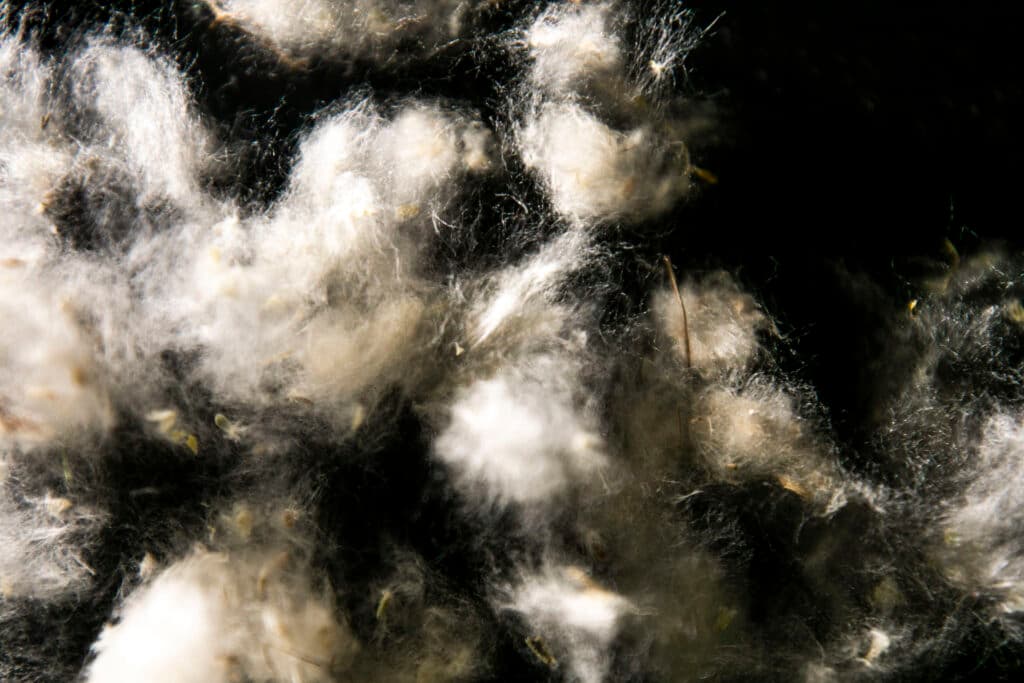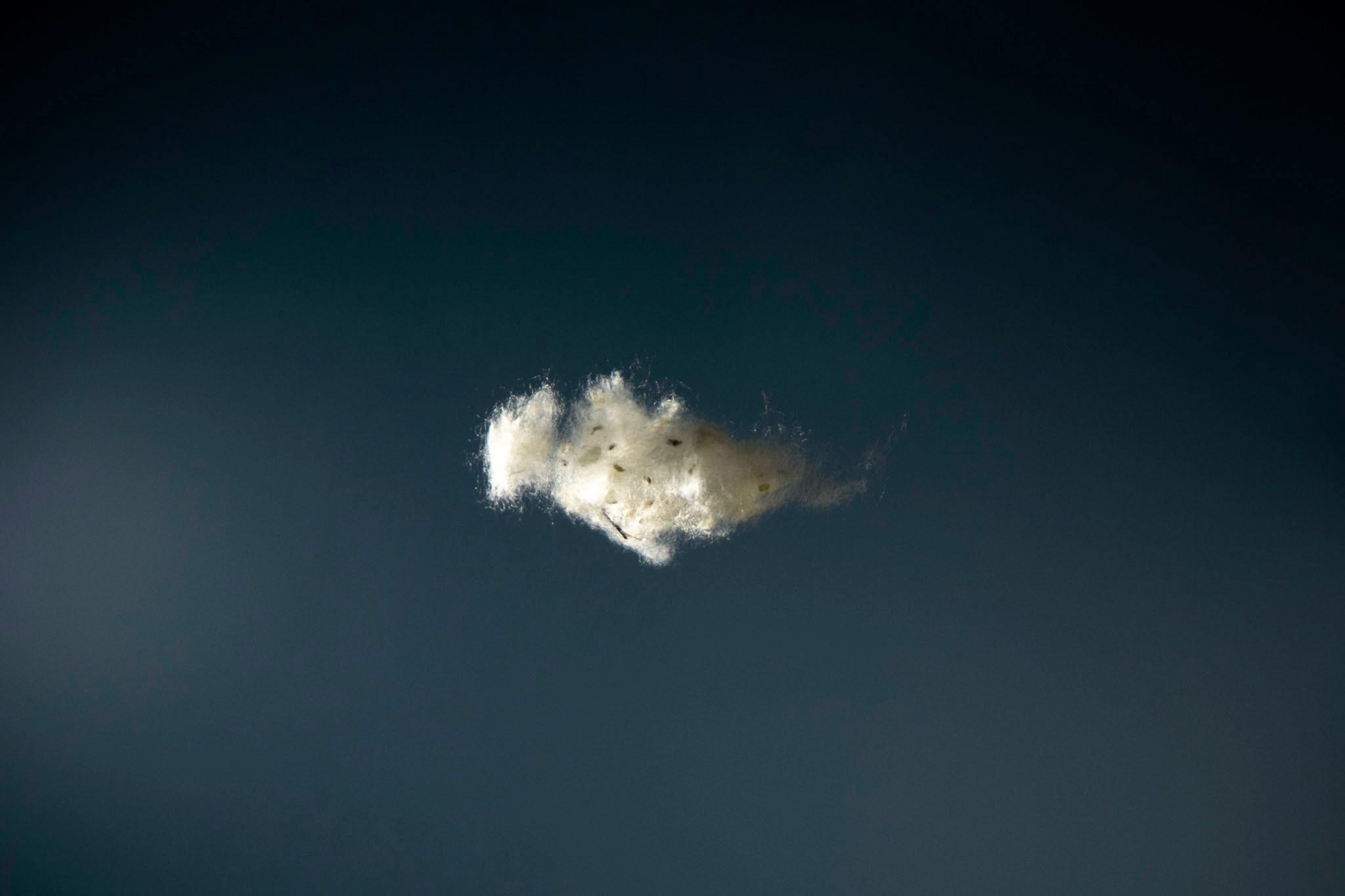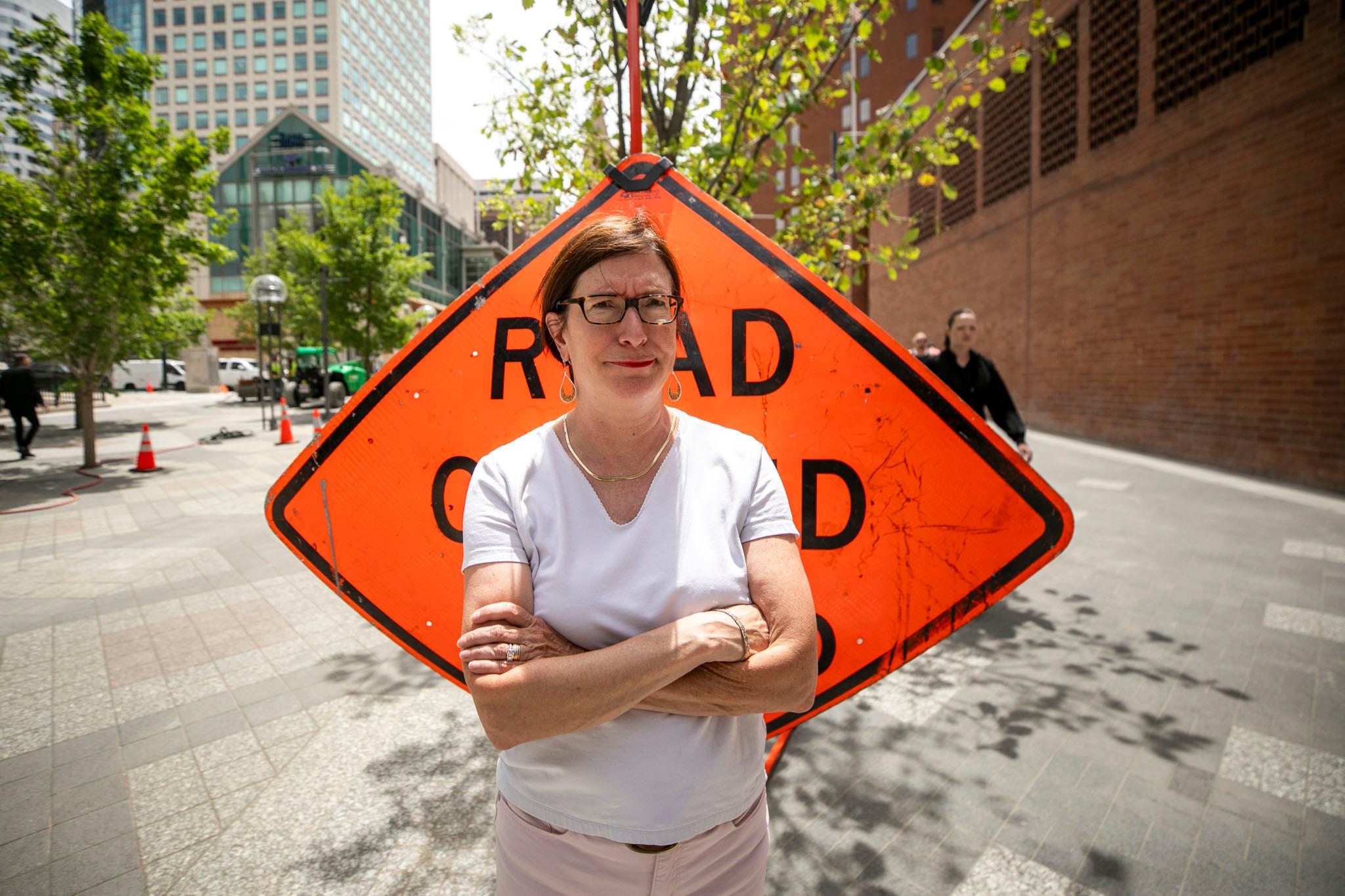A couple weeks back, a newcomer who had just moved downtown was eating brunch at the Snooze outside Denver Union Station when she saw dozens of white fluffy objects floating toward her.
“What are those white things?” she asked.
Denverites across the city have been asking the same question.
Since we were pretty sure the floating fluff was organic, Denverite contacted Denver Botanic Gardens horticulturist Laura Swain, a specialist in the native plants and ecology of the Eastern Plains and the Four Corners.
Those white puffy things are not tiny clouds or cotton candy (sorry). They are part of a native tree’s reproductive process.
“The white puffy things are from one of our wonderful and one of our few native trees,” Swain said.
Those are plains cottonwood, known in Latin as populus deltoides.
Cottonwoods are dioecious, meaning there are male and female trees with two separate types of blossoms.
In the spring, they flower.
“The male trees have these long, kind of pendulous flowers that are like a reddish purple and filled with pollen,” Swain said. “And the female trees have kind of similar flowers, and they're wind pollinated, so the wind blows the male pollen onto the female trees, and then the female trees get pollinated and start to produce seed.”
The seeds are little green capsules surrounded by white, cotton-like fuzz that helps them take flight in the wind.
“Some years we can have a little bit more cotton than other years or a tree that maybe wasn't at maturity can reach maturity, and that will produce more cotton,” Swain said.
This year, Swain’s heard rumblings that more seeds are blowing around than in a normal year, but she has no quantitative evidence to back that up.
The cottonwood trees and the white puffy seeds have a bad reputation in the city.
“They sort of stick to everything,” Swain said. “They're quite a nuisance. They pile up in lawns and on top of plants and in gutters.”
Some cities have gone so far as to ban female trees to avoid the spread of the seeds. But male trees produce a ton of pollen, causing their own kind of mess.
Some breeders have created sterile female cottonwood trees. But those are unreliable, Swain said. Several years after being planted, some can start to produce seed, despite their supposed sterility.
“If you're going to plant them, males are definitely the way to go,” Swain said. “But it's not a tree that you see being planted a lot anymore.”
Even so, the plains cottonwood was an integral part of Colorado's history and the founding of Denver.
“For early settlers of the area, cottonwoods were really symbolic of water, because they only grow along waterways,” Swain said. “You can be out on the dry short grass steppe of eastern Colorado, and it's brown and dry. But you can see where those streams are when you look out and see the cottonwoods on the horizon.”
When people started creating settlements, like the one that became Denver, they dug up cottonwoods from the Eastern Plains and replanted them here.
The trees provided shade, cleaner air and a little tranquility to growing cities. They offered a sense of hope and life in the West.
But they also made a mess.
For those cleaning cottonwood seeds from their gutters, it’s hard to appreciate the tree’s indigeneity.
“All year round, their flowers fall,” Swain said. “When the male flowers fall on the ground, the leaves are huge and numerous, and they fall and coat the ground. But really, I think most people are truly annoyed by the cotton.”

While cottonwoods have fallen out of favor, most trees make a mess.
Leaves and fruit drop. So do nuts. Honey Locust trees have massive pods.
So should you plant cottonwoods or a non-native variety?
“I think it just depends on your flavor of messiness,” Swain said. “What's more annoying to you, or which one do you want to have in your yard … messy or annoying?”
Even though cottonwood trees make a mess, they’re not as reproductively productive as other trees and won’t spread on your property.
“We don't have one million cottonwoods germinating everywhere, so a lot of them are probably not viable, or don't find a happy home on the dry urban streets,” Swain said. “They're not one that we see like as a weedy sapling in a lot of places.”
The non-native Trees of Heaven, on the other hand, do pop up everywhere, relentlessly, causing problems with foundations and disrupting the ecosystem.
Cottonwood trees have some real appeal.
Swain said cottonwood pollen is less likely to cause allergic reactions than pollen from other trees, including the popular piñon pine.
“If you walk by a pine tree right now, and touch it, you'll notice clouds of pollen coming off of the male cones,” she said.
Some people refer to the spreading of cottonwood seeds as “magic snow.” Others describe the seed’s appearance as “Winter in June.”

The seeds spread in May and June for several weeks, so it’s not like they’re a year-round annoyance. In fact, the rarity makes them somewhat exciting, part of the rhythm of the seasons.
“I think it depends on your proximity to large groves of them whether you think it's magical or messy,” Swain said.
And maybe, because of their historic nature and deep ties to local ecology, they deserve more praise.
“I think they're an easy plant to vilify in the urban environment,” Swain said. “But they're definitely a worthy tree and one of our only native trees to our local area. So they're pretty special despite all their white puffy things.”









